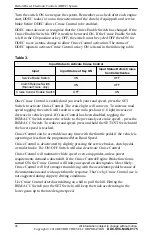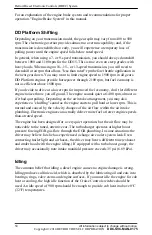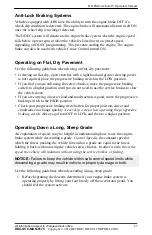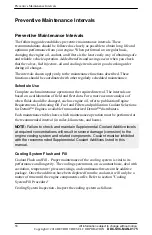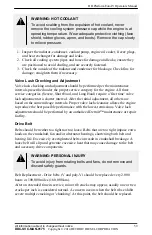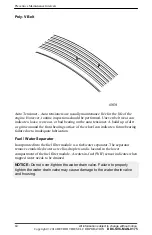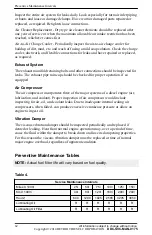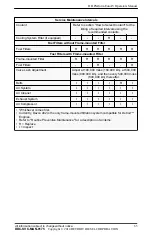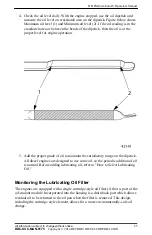
For an explanation of the engine brake system and recommendations for proper
operation, "Engine Brake System" in this manual.
DD Platform Shifting
Depending on your transmission model, the gear split may vary from 400 to 500
rpm. The electronic governor provides almost no overrun capability; and, if the
transmission is downshifted too early, you will experience a temporary loss of
pulling power until the engine speed falls below rated speed.
In general, when using a 7- or 9-speed transmission, you should always downshift
between 1000 and 1100 rpm for the DD15. This is true even on steep grades with
heavy loads. When using an 18-, 15-, or 13-speed transmission, you will need to
downshift at an rpm that allows "less than rated" rpm before throttle application in
the next gear down. You may want to limit engine speed to 1900 rpm in all gears.
DD Platform engines provide horsepower through 2100 rpm, but fuel economy is
not as efficient above 1800 rpm.
If you decide to drive at a lower rpm for improved fuel economy, don’t let different
engine noises throw you off guard. The engine sounds quiet at 1400 rpm, almost as
if it had quit pulling. Depending on the air intake arrangement, you may also
experience a "chuffing" sound as the engine starts to pull hard at lower rpm. This is
normal and caused by the velocity changes of the air flow within the air intake
plumbing. Electronic engines can actually deliver more fuel at lower engine speeds
than at rated speed.
The engine has been designed for a very quiet operation, but the air flow may be
noticeable to the tuned, attentive ear. The turbocharger operates at higher boost
pressure forcing EGR gas flow through the EGR plumbing. In some situations the
driver may believe he/she has experienced a charge air cooler system leak. Even
connecting trailer light and air hoses, the driver may hear a different tone (exhaust
and under hood with the engine idling.) If equipped with a turbo boost gauge, the
driver may occasionally note intake manifold pressure exceeds 35 psi (6.89 kPa).
Idling
The common belief that idling a diesel engine causes no engine damage is wrong.
Idling produces sulfuric acid, which is absorbed by the lubricating oil and eats into
bearings, rings, valve stems and engine surfaces. If you must idle the engine for cab
heat or cooling, the high idle function of the Cruise Control switches should be
used. An idle speed of 900 rpm should be enough to provide cab heat in above 0°C
(32°F) temperatures.
Detroit Diesel Electronic Controls (DDEC) System
50
All information subject to change without notice.
Copyright © 2014 DETROIT DIESEL CORPORATION
DDC-SVC-MAN-0175













